Introduction
In the present arena of rapid movements, ridesharing applications have made traveling better and simpler.
Life is so much more convenient, cheaper, and faster at the fingertips. Uber has established itself as the sparkling oil lamp among all ride-sharing services across the globe.
Uber is the largest and still growing revenue-wise, with a whopping $44 billion in collections in 2024, up 18% from last year.
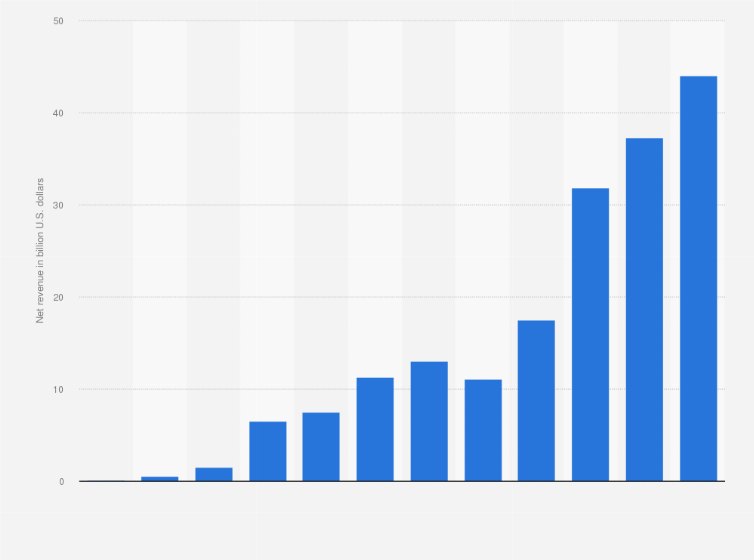
The platform right now has a 171 million user base, where people use Uber at least once a month. This is a pretty handsome 13.8% growth year-on-year.
However, given the fact that Uber is a big player in the game, this does not mean that it is the only app doing it.
Whether it is affordability, interesting features, or services designed to your specific needs, apps like Uber aren’t costly.
The list goes on and on; examples of Uber alternatives for budget-constrained use to apps similar to Uber but focusing on niche markets.
In this blog, we will present the top 20 similar apps to Uber that will change the future of ridesharing in the year 2025.
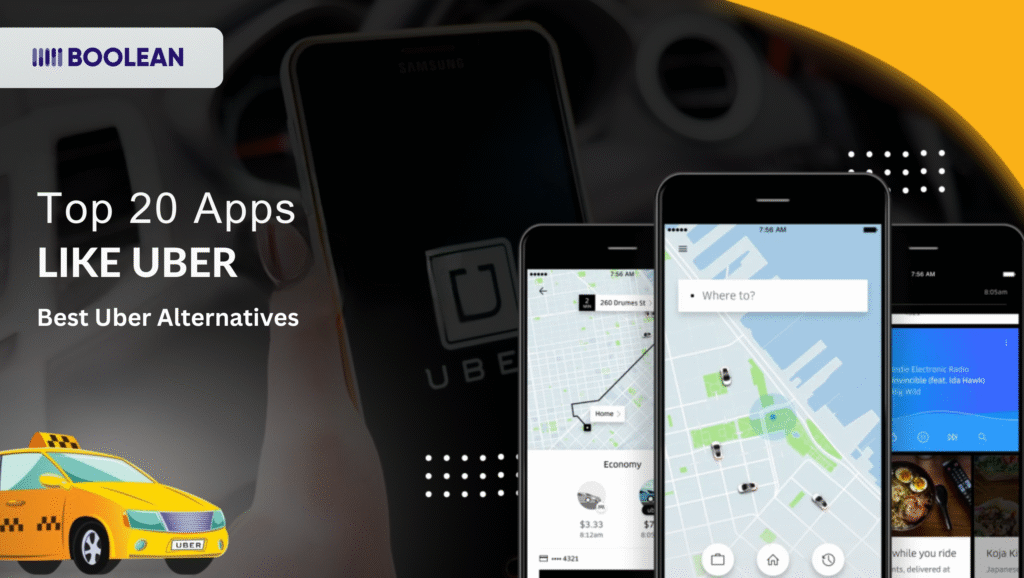
This article contains all the information needed by riders looking for cheaper alternatives to Uber and Lyft as driving apps like those provided by Uber.
In this article, we will look at the best Uber competitors in the USA and internationally, and finally find you the best Uber alternative for your needs.
You’ll discover all the best Uber like apps, compare what features they offer, and help you find the service that works best for your lifestyle and budget.
Also, it can provide you with rideshare options that are similar to Uber, options that are like Lyft, and long distance Uber alternatives all in one place.
Let’s get started!
TOP 20 Apps Like Uber / Best Uber Alternatives
Here is a quick overview of the Best 20 apps like Uber/ Top Uber alternatives.
- Lyft
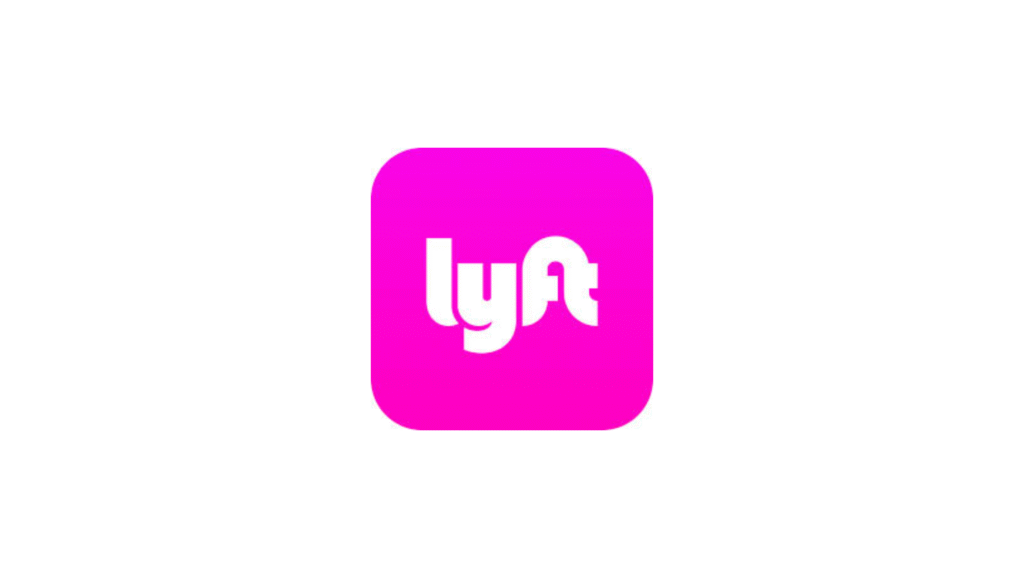
If you are interested in exploring the best alternatives to Uber, then Lyft is the most popular among the best ones, such as Uber.
Started in 2012, Lyft now stands out as one among the best Uber competitors in the USA. It makes the booking process easier, and being usable across both relay and host makes it user-friendly.
Passengers wanting to book online rides can do so through a user-friendly mobile application, making it a very strong contender against Uber and Lyft alike.
One such useful feature is the predicted fare and time of arrival before booking, which makes it even more transparent in planning for these trips.
The cost-effectiveness of its shared rides (Lyft Shared) can also make a big difference for cost-conscious travelers.
Safety is another concern for users, and Lyft brings real-time GPS tracking, driver information, and an in-app emergency assistance button to its safety profile. By screening drivers through background checks, Lyft ensures that riders can feel comfortable and secure.
Available in numerous cities across the US, Lyft has become a dependable transportation app like Uber for both personal and business use.
Be it either a cheap Uber alternative or simply an app-lover wanting to know more about other apps like Uber, Lyft makes for a fantastic choice.
Key Features of Lyft:
- A considerable range of rides, from shared rides to luxurious rides.
- Tracking in real-time through GPS and information on drivers.
- In-app button for emergency assistance, again for safety.
- Transparent pricing mechanism with fare estimates listed beforehand.
- Background checks of drivers as a rider safety measure.
Pros & Cons of Lyft:
| Pros | Cons |
| Easy-to-use app interface | Surge pricing during peak hours |
| Multiple ride options | Limited availability in smaller cities |
| Transparent fare estimates | Prices can vary based on demand |
| Strong safety features | Additional fees for extra services |
Read Also: 10 Top Travel Apps and Websites You Need to Explore
- Curb

If you’re searching for an app alternative to Uber and prefer connecting with licensed taxi drivers, Curb might just be what you want to give Uber a run for its money.
Curb was founded in 2007, built to bring the convenience of ride-hailing to traditional taxis, allowing customers to book a ride seamlessly and efficiently with professional drivers.
Another thing is that Curb is available in over 65 cities throughout the US, certainly an alternative to Uber for clients who prefer the safety and professionalism of licensed taxi services.
Instant booking of rides or setting them up in advance is also provided by Curb so you are covered anytime you need a ride.
One of the nicest features of Curb is its upfront pricing that takes away any guessing game, which will assure the passenger of the fare beforehand, before even stepping into the car.
The app lets you track your driver’s location and estimated arrival time in real time.
Besides these, Curb offers digital receipts and corporate accounts, making it a choice for business-friendly travelers, thus presenting good competition to Uber.
Moreover, Curb offers licensed taxis, ensuring a solid guarantee of safety and reliability, as all the drivers are completely vetted and licensed.
Curb is excellent whether you’re looking for a cheaper Uber alternative or simply want to support old-fashioned taxi services.
Another one of the best Uber-like apps that connects the gap between modern ride-hailing and traditional taxi services is Curb.
Key Features of Curb:
- It connects users to licensed taxi drivers.
- More than 65 cities across the US are covered.
- Transparent estimates based on upfront pricing.
- GPS tracking and driver information in real-time.
- Digital receipts and corporate accounts for business travel.
- Rides can be booked instantly or scheduled in advance.
Pros & Cons of Curb:
| Pros | Cons |
| Licensed and professional drivers | Limited availability in some areas |
| Upfront pricing for transparency | Slightly higher prices than Uber in some cases |
| Real-time tracking for convenience | Fewer ride options compared to Uber |
| Great for business travelers | May not have as many drivers as Uber |
- Gett

If you are looking for cheaper alternatives to Uber and Lyft? You can look for Gett.
Gett was originally launched in Israel and underwent expansion into over 100 cities worldwide, including behemoth economic centers like New York, London, and Moscow.
Gett works on a fixed-price model, where the fare you see when booking is the fare you pay, surprises, even in peak hours!
Furthermore, they collaborate with licensed taxi drivers and private car services, which is a blend between traditional and modern ride-hailing methods.
Yet another strength of Gett is its focus on providing solutions for corporate travelers.
This app allows companies to manage their employees’ rides, track expenses, and access detailed reports.
Because of this, Gett has become a front-runner among companies searching for an Uber alternative for business travel.
It also provides users with on-demand rides and scheduling, depending on their choice of planning their trips.
The safety of its users is yet another priority of Gett, equipped with facilities such as real-time tracking of rides, details of the driver, and 24-hour customer support. All drivers undergo a strict set of checks to ensure rider comfort and safety.
Its global presence, fixed pricing, and all business credit make it among the best apps like Uber in existence today.
Key Features of Gett:
- The fixed-price model provides no surge pricing.
- Present in 100 different cities and counting.
- Focus on corporate travel solutions.
- Tracking real-time rides with driver details.
- Rides on demand and scheduled rides.
- Partnerships with licensed taxi drivers & private car services.
Pros & Cons of Gett:
| Pros | Cons |
| Fixed pricing with no surprises | Limited availability in smaller cities |
| Great for corporate travel | Fewer ride options compared to Uber |
| Real-time tracking for safety | May have fewer drivers in some areas |
| Global presence in major cities | Slightly higher base fares than Uber |
| Reliable and professional service | Less focus on shared ride options |
Read Also: How to Choose the Best Mobile App Development Company in Los Angeles?
- Ola

Ola has an entire landscape of strong contenders for apps like Uber, particularly among its best alternatives in India.
It started in 2010 and eventually became one of the largest ride-hailing platforms in the country, with the availability of more than 250 cities-varieties for different travel perspectives and budgets.
It’s not just cars but everything from auto-rickshaws, and bike taxis, to luxury rides- that is always there for you to pick.
Ola offers more ride options for travelers than anyone else. It has got such varied solutions-from low-budget to really high-end rides, available for everyone.
The ride scheduling option is very useful with Ola, where a person can book the rides before-hand, especially helpful for planning airport trips or important meetings.
Real-time tracking has been included in the app too, so that you will always know where your ride is and when it’s going to come.
The user-friendly interface of Ola allows booking a ride instantly and more easily.
It’s got so many payment methods, such as cash and digital wallets apart from all other varieties.
Safety is on priority for Ola, as it has features like driver details, trip sharing, and much more with 24/7 customer support.
This is a good budget and reliable option in India and for anyone traveling there. It is that easy and comfortable ride for you, whether you want to commute to work or go somewhere in extra luxury.
Key Features of Ola:
- Multiple riding options like cars, auto-rickshaws, and bike taxis.
- Schedule rides ahead of time.
- Real-time tracking was introduced for safety.
- Cash and digital payment options.
- Available in over 250 cities across India.
Pros & Cons of Ola:
| Pros | Cons |
| Wide range of vehicle options | Limited availability outside India |
| Affordable and budget-friendly rides | Surge pricing during peak hours |
| Ride scheduling for convenience | Service quality may vary by city |
| Real-time tracking for safety | Fewer luxury options in smaller cities |
| Multiple payment methods | Occasional app glitches |
- Via

Via is a great option when it comes to other driving apps like Uber.
Via has gone up in offerings for shared rides and cheap transportation among apps like Uber.
Established in 2012, Via has revolutionized urban transport by offering shared rides that are both affordable and green.
Via is a perfect choice for commuters who intend to save a little money and leave a much smaller footprint.
Via’s distinct offer is connecting riders heading in the same direction so they can connect and share the ride, Spliting the cost between themselves.
Notably, it’s one of the cheaper rideshare applications available on the market, especially beneficial to daily commuters.
Plus, it provides real-time tracking on the app for people to be able to see exactly where their ride is and when it will arrive.
One of the very specific functions that it provides is dynamic routing. This is because routes through the Via app are optimized in real-time to minimize detours and unnecessary pickups and drop-off locations.
Therefore, the Via application becomes one of the best options available for those individuals who are punctual and look for convenience.
It has shared rides but also has private rides and corporate travel solutions. So it is easy and versatile for personal and business use. Well, the app is quite user-friendly with a simple interface that makes booking very quick.
Key Features of Via:
- Affordable shared rides for eco-friendly travel.
- Dynamic routing system for effective pick-up and drop-off.
- Real-time tracking and driver information.
- Private rides and corporate travel solutions.
- More than 100 cities in 20 countries.
- Easy, user-friendly app with an effortless booking process.
Pros & Cons of Via:
| Pros | Cons |
| Affordable shared ride options | Limited availability in some areas |
| Eco-friendly and efficient service | Shared rides may involve slight detours |
| Real-time tracking for convenience | Fewer ride options compared to Uber |
| Great for daily commuters | Surge pricing during peak hours |
| Corporate travel solutions | Not ideal for long-distance trips |
- Flywheel

Flywheel is a worthy Uber alternative when compared to other apps like Uber and Lyft in the US.
Flywheel has been created for people who enjoy the normal convenience of a mobile application and still depend on a taxi.
Flywheel, founded in 2009, provides licensing and insurance coverage to taxi drivers who are matched with users within cities and towns like San Francisco, Seattle, Portland, and San Diego.
This is a welcome option for those who tend to shy away from ridesharing services operated by unlicensed drivers, seeing that each ride comes with Flywheel to guarantee Safety, Trustworthiness, and Professionalism.
Digital payments for the rides are also available, providing real-time tracking that allows users to monitor their ride’s location and estimated arrival time.
Riders can also rate their experience, which helps keep service standards.
Flywheel is very useful to anyone seeking apps like Uber but with a foundation that is as trustworthy as taxi services.
Key Features of Flywheel:
- Current connection of users with licensed, insured taxi drivers.
- Real-time tracking for all rides.
- Digital payments, for cashless convenience.
- Ability to schedule rides in advance.
- Available in several major U.S. cities.
Pros & Cons of Flywheel:
| Pros | Cons |
| Reliable licensed taxi services | Limited to specific U.S. cities |
| Easy digital payments | Higher cost compared to ridesharing |
| Real-time tracking for added security | Longer wait times in less busy areas |
| No surge pricing during peak times | Fewer features compared to ridesharing apps |
- Wingz

Wingz is a very good rival app in the arena of providing discounted rides for services like Uber.
Like other ride-sharing applications you’re already used to, Wingz uses the familiar “book the same driver” feature for future rides, providing a heightened element of stability and trustworthiness. Ideal for someone who travels a lot or prefers the same driver and car for ride purposes.
This feature is especially valuable to frequent flyers or anyone who appreciates familiarity with the driver and the ride service.
Wingz also accepts rides scheduled as far in advance as two months, putting it among the best long distance Uber alternatives for travel with plans.
Wingz operates in numerous U.S. cities and focuses on providing vetted drivers with detailed reviews, ensuring safe and comfortable rides.
Another plus of the app is that it has fixed pricing, so there won’t be any surge fares during peak hours.
Wingz is a marvelous option for drivers who prefer an Uber like service that is reliable and personal.
Key Features of Wingz:
- Pre-booking rides up to two months in advance.
- Option to book the same driver for future rides.
- Airport transportation and personal transportation, specializations.
- Vetted drivers with detailed reviews.
- Fixed pricing with no surge fares.
Pros & Cons of Wingz:
| Pros | Cons |
| Consistent driver experience | Limited to specific U.S. cities |
| Pre-scheduling up to 2 months ahead | No on-demand service available |
| No surge pricing, fixed rates | Higher cost for last-minute changes |
| Ideal for airport travel and frequent users | Fewer drivers compared to larger apps |
- Hitch

Seeking a cheaper alternative to Uber and Lyft, specializing in long-distance rides?
Hitch is a great option for intercity travel at affordable rates.
Hitch launched in 2017 and connects passengers traveling in the same direction between major Texas cities (Austin, Dallas, Houston, and San Antonio).
Hitch operates differently (than traditional rideshare services) in that it is a fixed-route shared ride, and it can save riders up to 60% for long distance trips compared to Uber.
For budget-conscious and environmentally sustainable long distance Uber alternatives, Hitch is an innovative carpool-style service for travelers.
Regional availability sets it apart from other rideshare apps for intercity travel, thereby being some of the cheapest ones in their areas of service.
Key Features of Hitch:
- Shared intercity rides with fixed pricing
- Verified drivers and passengers
- Comfortable SUVs and vans
- Free cancellation up to 1 hour before departure
- Real-time tracking
Pros & Cons of Hitch:
| Pros | Cons |
| A most affordable option for 50+ mile trips | Limited to Texas routes |
| Social ride-sharing experience | Less flexible schedules |
| Eco-friendly by reducing cars on the road | Fewer vehicle options |
| No surge pricing | Longer wait times |
- HopSkipDrive
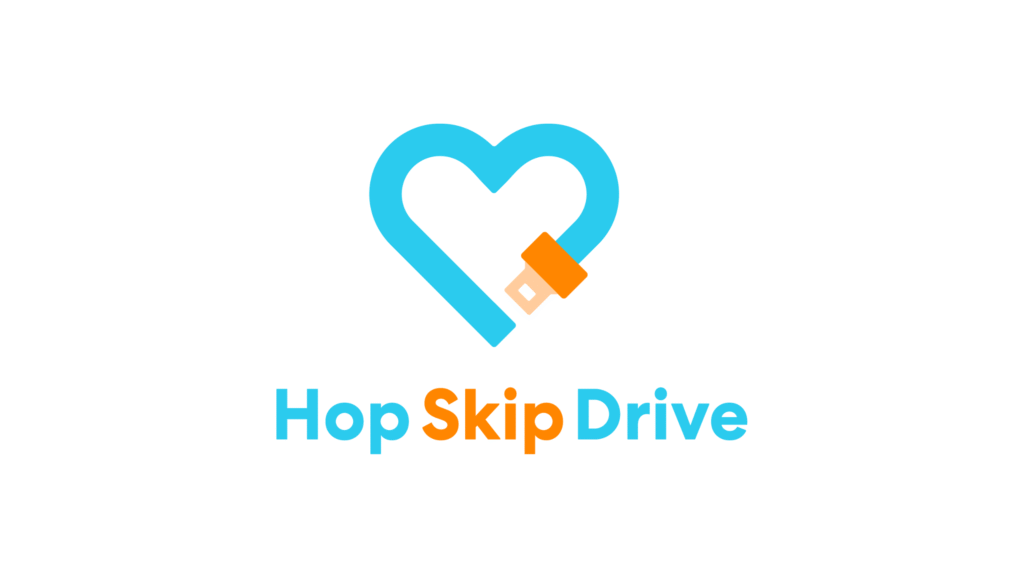
For safety through carpooling, and even special transportation services, HopSkipDrive boldly comes forward as the best Uber-like app for everyone’s needs.
It is specifically made for families with kids.
Established as a start-up in 2014, the service includes:
- Safe rides for kids above age 6;
- Transport to schools and other activities;
- Secure drivers: caregivers approved.
- Provides real-time tracking for parents.
Unlike standard apps similar to Uber, HopSkipDrive requires all drivers (called “CareDrivers”) to pass:
- 15-point certification process
- Fingerprint background checks
- Minimum 5 years of childcare experience
Key Features of HopSkipDrive:
- Ride tracking with text alerts
- Multiple authorized caregivers per account
- Ride notes for special needs.
- Available in 10+ major metro areas.
Pros & Cons of HopSkipDrive:
| Pros | Cons |
| The safest option for child transport | Limited to youth transportation |
| Detailed driver vetting | Higher prices than standard rideshares |
| School-approved service | Not available nationwide |
| Customizable ride details | Requires advance booking |
HopSkipDrive may not be the cheapest rideshare app, but such a specialized focus gives a feeling of security that regular alternatives, of Uber do not match.
- Juno

For riders and drivers seeking Uber alternatives that are fair, Juno offers an Uber like app with a driver-first philosophy.
This platform, founded in 2016 and based in NYC, distinguishes itself by offering:
- Higher driver earnings (just 10% commission instead of Uber’s 25%)
- Cheaper rider pricing (usually lower than Uber on equivalent rides)
- Straightforward, transparent fare structure
Why Choose Juno as an Uber Alternative?
Juno focuses on:
- Ethical ridesharing with better driver pay
- No surge pricing during peak hours
- Three service tiers: Juno, Juno XL, Juno LUX
Key Features of Juno:
- Driver tipping within the app
- No hidden fees or surge pricing
- Clean interface, free of advertisements
- 24/7 live customer support
- All drivers are licensed NYC professionals
Pros & Cons of Juno:
| Pros | Cons |
| More earnings for drivers | Only serves NYC |
| Transparent pricing model | Smaller fleet than Uber/Lyft |
| No predatory surge pricing | Fewer vehicle options |
| Ethical business practices | Limited marketing presence |
Juno also shows that Uber type apps can profit while providing equanimity for all parties involved.
For Manhattan commuters who want to support equitable ridesharing, Juno checks all the boxes where the other Uber competitors in the USA fail.
- Split
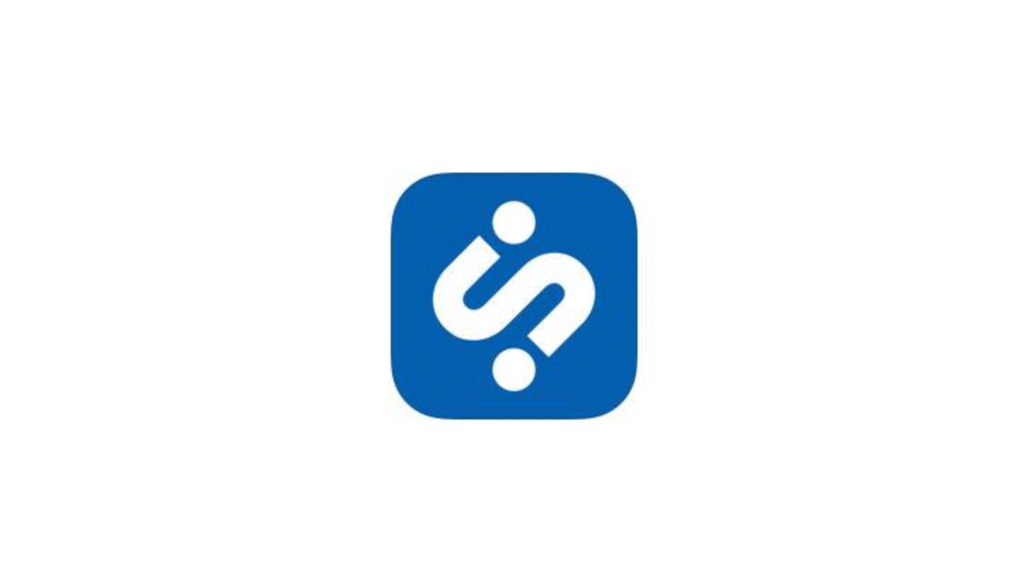
Split recasts ridesharing as a social encounter, with one of the rare Uber replacements meant specifically for cost-sharing among friends.
Why It Stands Out:
- It divides fares automatically
- Coordination of group rides
- Sociable payment system
- It is often cheaper than Uber for three or more passengers.
Key Features of Split:
- Instant fare calculation method
- Scheduling and tracking group rides
- Integrated Payment Collection
- Driver preference and rating
- Available in 15-plus US college towns
This unique app for Uber is an answer to students, friend groups, and anyone who often travels with others when it comes to the “who pays” dilemma. It’s usually also the cheapest ride share app option available for group travel.
Good For:
- Bar hopping with friends in tow.
- Getting to/from concerts/events.
- Frequent commute with coworkers.
- Campus mobility at a university level.
Split shows that sometimes the finest replacements for the Uber service are not exact replicas, but rather a service that redefines ridesharing.
Pros & Cons of Split:
| Pros | Cons |
| Saves 20-40% vs individual rides | Limited metro coverage |
| No awkward money discussions | Smaller driver network |
| Perfect for nights out/events | Requires group coordination |
| Social payment reminders | Less ideal for solo trips |
- Co-Op Ride
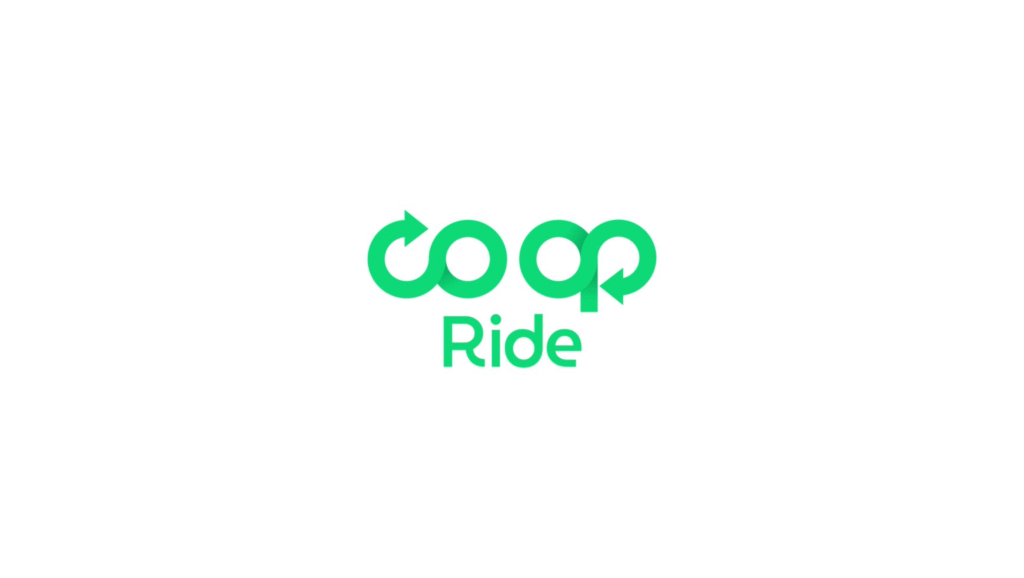
Looking for Uber competitors that actually favor drivers?
Co-op Ride will greatly interest you since it is a rare breed of Uber-like app where the drivers keep 100% of the fare, only on a commission-free rideshare platform.
Driver-Owned Difference:
- The first worker-owned rideshare cooperative
- $5 monthly membership instead of commissions
- Democratic driver governance
- Now serving NYC and Washington, DC
Key Features of Co-op Ride:
- 100% of the fare goes to your driver
- Same convenience as any major app
- Every driver has been thoroughly vetted
- In-app chat directly with drivers
- The pricing calculator is totally transparent
For the conscious consumer:
“Finally, a service like Uber that doesn’t exploit drivers” – Fast Company
Although still not able to provide nationwide competition to Uber, Co-op Ride is the way forward for ethical ridesharing; it is proof that Uber like apps can put people before profits.
A perfect ride for those who want to support:
- Fair labor practices
- Competitive rates
- Personalized service
- Vote with their wallet
One of the few Uber alternatives that makes every ride one step toward a more equitable gig economy.
Pros & Cons of Co-op Ride:
| Pros | Cons |
| Most earnings for drivers | Limited service areas |
| No surge pricing | Smaller vehicle fleet |
| Ethical alternative to Uber | $5/month driver fee |
| Driver-owned structure | Fewer luxury options |
- GoKid

Are you tired of running around making arrangements for your kids’ rides?
GoKid is transforming carpooling into a safe Uber alternative specifically designed for families.
The new-age platform turns chaotic school runs into organized, stress-free transportation.
Why Parents Like It:
- Verified parent-to-parent carpool networks
- Military-grade encryption for all data
- Used by 50,000+ families across the country
- Saves parents 5+ hours weekly on average
Smart Features About GoKid For Busy Families:
- Trust System – Only connect with parents from your school/community
- Auto-Scheduler – Creates rotating carpool calendars
- Live GPS – Follow every ride in real-time
- Automated Notifications – Never miss a pickup again
- Group Management – Handles complicated dynamics
Good for:
- School/extracurricular transportation
- Working parents with busy schedules
- Safety versus convenience families
- Communities congesting streets
Pros & Cons of GoKid:
| Pros | Cons |
| Saves 30+ monthly driving hours | Requires network building |
| Cuts transportation costs by 75% | Not instant ride-hailing |
| Teaches kids community values | Limited to pre-arranged trips |
| Eco-friendly (reduces cars) | iOS-first development |
Stop looking for an Uber like app: GoKid offers parents the safety and assurance they need when sharing rides with trusted acquaintances.
It’s not just sharing rides; it is sharing peace of mind.
- Blacklane

Catering to travelers in search of a premium Uber alternative, Blacklane brings luxury ridesharing to a new level that celebrates the experience of a chauffeur-driven global service.
A high-end solution in over 300 cities worldwide, it fuses the ease of app-based transportation like Uber with the treat of five-star hospitality.
So, why discerning travelers choose Blacklane?
- Mercedes-Benz/E-Class vehicles standard
- Professional chauffeurs with a minimum of 3 years of experience
- 60 minutes of meet-and-greet service at the airport
- Carbon-neutral rides since 2017
Key Features of Blacklane:
- Airport Excellence – Flight tracking + 60min free wait time
- Global Consistency – Same standard from Paris to Singapore
- Precision Booking – By-the-minute or hourly charters
- Corporate Solutions – Integrated expense management
Ideal for:
- Business executives
- Airport transfers
- Special occasions
- International travelers
Pros & Cons of Blacklane:
| Pros | Cons |
| True door-to-door service | Premium pricing |
| Fixed rates (no surge) | Limited instant bookings |
| Worldwide availability | Few economic options |
| Complimentary bottled water | Minimum ride durations |
- inDrive

Looking for alternatives to Uber that have traditional pricing?
inDrive (formerly known as inDriver) has introduced a completely new bid-based mechanism in the ridesharing market, and is among those alternatives to Uber with a completely different passenger-driven approach.
Global Reach with Local Impact:
- Founded in Siberia (2013), while now expanded to over 40 countries
- Recently launched in the USA, Miami will be the first to be expanded
- Flourishes among high-growth countries where Uber faces issues
- Global coverage with over 1 million rides processed every day
How the Game-Changing Model Works:
- The passenger proposes the amount to pay
- Nearby drivers accept/counter-propose the fare
- Deal strikes at the fair market value
Reasons Why People Like This Uber Alternative:
- No surprise surge this is the max amount you set for it
- Better for drivers-more is kept in their pocket
- Works where others don’t – serves remote/rural areas
- Cash or digital payment – has flexible options
Ideal For:
- Budget travelers who need cheaper alternatives to Uber
- Markets with few ride-share options
- For everybody who is just tired of algorithm pricing
- Rides between cities/towns
Pros & Cons of inDrive:
| Pros | Cons |
| Save 25-40% vs Uber | Not ideal for instant rides |
| Complete price transparency | Requires fare negotiation |
| Strong in developing markets | Limited U.S. availability |
| Driver-friendly economics | Fewer luxury vehicle options |
inDrive has yet to become quite a household name in America, but it’s rising on an explosive growth path globally, and this indicates that there is demand for more of this Uber competitor, taking the pricing back into the hands of users.
Did You Know? inDrive is now the 2nd most downloaded rideshare app globally, surpassing Lyft in most markets!
- Grab

Looking for Uber-type apps that dominate Southeast Asia?
Grab is far more than just an alternative to Uber – it’s a superapp that disrupted the transportation industry by acquiring Uber’s SEA operations in 2018.
Reasons Why the App is Number One in Southeast Asia:
- Covers 500+ cities in 8 countries
- 9 million+ daily rides handled
- Growth from rides to food/grocery deliveries
- Localized for the needs of every market
Beyond Just Rides:
- GrabCar (standard rides)
- GrabBike (motorbike taxis)
- GrabTaxi (metered cabs)
- GrabCar Plus (premium)
- GrabExpress (deliveries)
Key Features of Grab:
- Integrated e-wallet (GrabPay)
- Cashless tipping for drivers
- Regional rewards program
- 24/7 safety response center
Not the cheapest rideshare app, Grab at least offers the most comprehensive transport solution in Southeast Asia – it is not just a competitor of Uber: it is what Uber could have never become in this region.
Ideal For:
- Tourists exploring Southeast Asia
- Expats needing daily travel
- People want an all-in-one app
- Cashless payment enthusiasts
Pros & Cons of Grab:
| Pros | Cons |
| Unmatched regional coverage | Limited service outside SEA |
| Multiple transport options | Complex pricing structure |
| Superapp convenience | Occasional driver shortages |
| Strong safety features | Higher fees than local taxis |
Fun Fact: Driving for Grab exceeds Uber’s all-time peak SEA fleet number by 5x- note it!
- Didi Chuxing

DiDi Chuxing is the front-runner, having overplayed Uber in the Chinese market and today becoming the biggest mobility platform in the world.
Why Is The King Of Ride-Hailing In China?
- With over 550 million users traversing 16 countries
- More than 30 million rides per day only in China
- 60% cheaper than Uber in Chinese cities
- Dispatch system based on AI
Service Offerings:
- Express (Economy rides)
- Premium (Luxury cars)
- DiDi Bike (E-bike sharing)
- DiDi Bus (Smart bus routes)
- DiDi Night (Late-night service)
Not just an Uber alternative, DiDi is just another image of China’s strong tech capabilities in transportation.
DiDi thrives, processing more rides before lunch than some of Uber’s competitors manage in an entire day, while Uber backed out of China.
Ideal For:
- Business travelers in China
- Mandarin speakers
- People want local transport solutions
- Affordable commuting
Key Features of DiDi Chuxing:
- Integrated WeChat/Alipay payment means
- “Safe Ride” emergency protocols
- Carpooling for more than 50% cost savings
- English-language app option
Pros & Cons of DiDi Chuxing:
| Pros | Cons |
| Unbeatable China coverage | Complex verification for foreigners |
| Ultra-competitive pricing | English support varies by city |
| Seamless payment options | Requires a Chinese phone number |
| Advanced safety features | Limited availability outside Asia |
Did You Know? DiDi’s AI processes 4,000 ride requests per second during the peak hour! For traveling in China, this Uber clone is a must-have!
- Bolt

Is there any app that pays more to both the rider and the driver, besides Uber?
Well, Bolt (formerly Taxify) came up as the fastest-growing option for Uber, operating in 45-plus countries across Europe and Africa.
Why It Gains Popularity:
- The fares are usually 10-15% lower than Uber’s
- Drivers pay a much lower commission- 15% vs Uber’s 25%
- It’s rapidly expanding to other secondary cities
- Very much focused on the emerging markets
Range of Services:
- Bolt (standard rides)
- Bolt Bike (motorbike taxis)
- Bolt XL (group rides)
- Bolt Taxi (metered cabs)
- Bolt Scooters (e-scooter sharing)
Bolt proves that Uber alternatives can compete on two fronts: price and quality.
Contrarily, however, due to its rapid expansion and competitive rates, it is by no means a top competitor to other apps like Uber.
Ideal For:
- Budget travelers
- The inhabitants of the secondary cities
- Riders who prefer to support fairer platforms
- Short urban trips
Key Features of Bolt:
- Upfront pricing before booking
- The security feature in-app
- Choose either cash or a card
- Rewarding loyal users
Pros & Cons of Bolt:
| Pros | Cons |
| More affordable than Uber | Smaller driver network |
| Driver-friendly platform | Limited luxury options |
| Expanding city coverage | App glitches reported |
| Transparent pricing | Support response times vary |
Did You Know? Bolt drivers make, on average, about 20% more per ride than Uber drivers do on the same streets! This is another great reason for ethical riders to support Bolt as a worthy Uber competitor.
- EasyTaxi
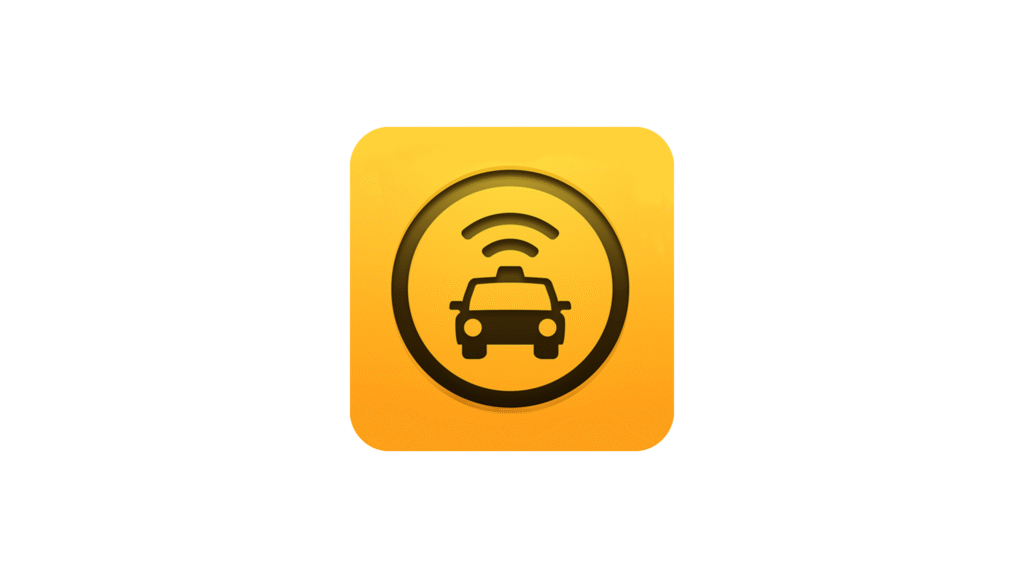
If you’re looking for a trustworthy Uber like service that merges traditional taxis with the contemporary ride-hailing trend, then EasyTaxi is one of the earliest Uber like apps in Latin America and other emerging markets.
Why It’s a Regional Powerhouse:
- Operational since 2011 and hosting its services in 30+ countries
- Works in connecting the users with licensed taxi drivers
- Strongest in Brazil, Mexico, and Colombia
- Peak operations processes over 1 million rides daily
EasyTaxi was processing rides in Latin America before Uber ever set foot there! This Uber alternative still delivers the regulated and reliable taxi service whenever it matters.
Advantages Over Old Taxis:
- Buyers can instantly book a taxi; no more hailing on the street
- Track the exact location of the driver
- Pay cashless; credit card payments are accepted
- The rating system to rate drivers for quality control
Service Options:
- Normal taxi services
- Corporate accounts
- Other options include executive vehicles and airport transfer services.
Key Features of EasyTaxi:
- Licensed drivers, regulated by governments
- Metered fares, no surge pricing
- Partnership with local established taxi companies
- Superior in cities below 500K in population
Although EasyTaxi is not as fancy as newer rivals to Uber, this is an Uber like app still used by millions who value the safety and regulation of traditional taxis with comfort.
Market-Specific Benefits:
- 🇧🇷 In Brazil: Integrates with local taxi cooperatives
- 🇲🇽 In Mexico: Preferred for airport transfers
- 🇨🇴 In Colombia: Most trusted option to hail a cab
Ideal For:
- Travelers who prefer licensed taxis
- Those visiting smaller towns
- Riders who like predictable meter rates
- Business users who need receipts
Pros & Cons of EasyTaxi:
| Pros | Cons |
| More regulated than rideshares | Less modern vehicles sometimes |
| Fixed meter pricing | Fewer ride options than Uber |
| Strong local knowledge | App design feels dated |
| Available where Uber isn’t | Limited English support |
Pro Tip: It can be handy for airport transfers, especially in places where Uber works under legal restrictions.
- Cabify
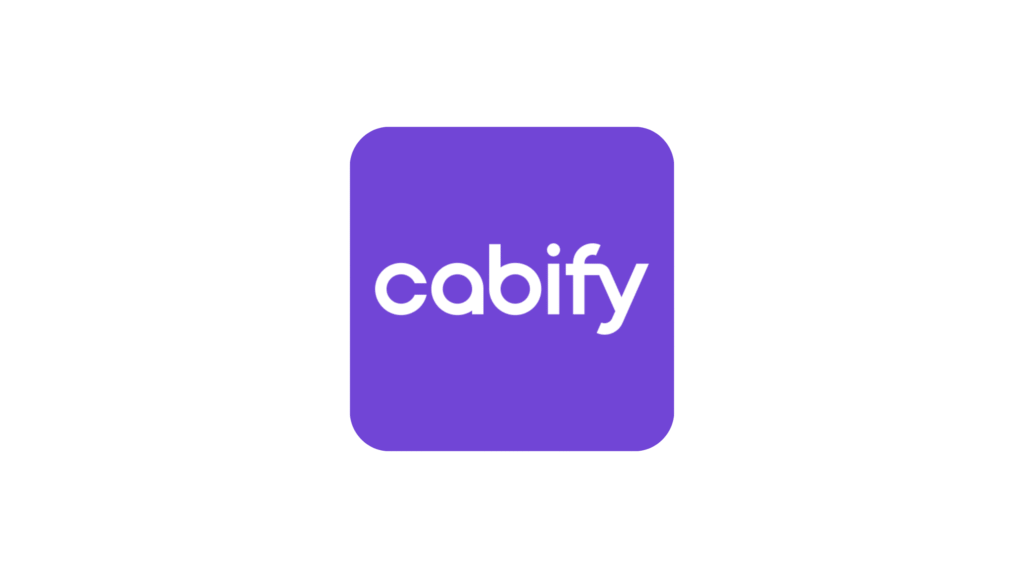
Are you looking for high-end Uber-like apps with a Latin American touch?
Cabify has made a name for itself amongst the elite options of Uber, mixing European standards and Latin American market finesse in 11 countries and 40+ cities.
Why Choose This Sophisticated One?
Founded in Madrid but now dominant in Latin America, Cabify offers:
- Quality vehicles above and beyond standard rideshare services
- Professional drivers dressed in suits
- Strict corporate expense protocols
- A service called Cabify Mujer for rides just for women
Service Options:
- Lite (economy)
- Executive (premium sedans)
- Group (big cars)
- Taxi (metered option)
- Mujer (women drivers for women passengers)
Cabify Experience:
Cabify stands apart from its competitors in Uber, as its target remains the upper-tier clientele while keeping prices competitive on the low end.
Drivers are diligent with training, and the age/mileage requirements of vehicles are stringent; you’ll never be in a dented-up old cab with Cabify.
How their company accounts work is particularly strong due to:
- Detailed digital receipts
- Custom spending limits
- Multiple-user team accounts
- API integration with expense systems
Key Features of Cabify:
- Fixed upfront pricing
- Premium support 24/7
- Carbon offsetting program
- Pet-friendly options
Cabify proves that Uber alternatives can be good in quality rather than cheap. You will be paying a 10-15% premium over an UberX ride, but for the discerning consumer, that premium experience is worth every single cent.
Ideal For:
- Business travelers requiring reliability
- Women valuing safety
- Anyone fed up with inconsistent Uber quality
- For travel departments dealing with corporations
Did You Know? Cabify was the first ride-hailing app to:
- Introduce panic buttons in Latin America?
- Offer 100% carbon-neutral rides?
- Offer a program targeted at women’s safety?
For those who see transport as a service, not a commodity, it operates an Uber like competitor that blends white-glove service with ridesharing.
Pros & Cons of Cabify:
| Pros | Cons |
| Best-in-class vehicles | Smaller service area |
| Excellent business features | Higher minimum fares |
| Strong safety focus | Limited promotions |
| Consistent quality | Fewer drivers than Uber |
Pro Tip: Their airport transfer service is particularly reliable – drivers track your flight and automatically adjust pickup times for any delays.
Top 5 Uber Alternatives Compared- Which One Suits Your Needs?
As there are multiple apps like Uber, it is quite confusing to select one. When affordability, safety, and good services are prioritized differently, each platform’s features are different.
Thus, using the app’s rating of the top 5 alternatives to Uber, we share the basic things by which they are compared, including price, availability, and features.
| App | Why Choose It? | Best For | Availability | Pricing | Payment Options |
| Lyft | User-friendly, multiple ride types, strong U.S. presence | Every day, commuters shared rides | U.S. & Canada | Surge pricing during peak times | Credit/debit, PayPal, Apple Pay |
| Bolt | Lower fares than Uber, driver-friendly commissions | Budget travelers, eco-conscious riders | Europe & Africa | Upfront pricing, no surge fees | Card, cash (varies by region) |
| Ola | Auto-rickshaws, bike taxis, and food delivery | Riders in India, flexible transport | India, Australia, UK | Dynamic & fixed pricing | Cash, digital wallets, UPI |
| Grab | All-in-one superapp (rides, food, payments) | Southeast Asia travelers | SEA (8 countries) | Competitive, varies by service | GrabPay, cards, cash |
| Gett | Fixed pricing, corporate travel solutions | Business travelers, expense tracking | US, UK, Israel | No surge, flat rates | Card, corporate billing |
Which of the Uber Alternatives Should You Choose?
- Budget needed? → Bolt (cheaper than Uber in Europe/Africa)
- Traveling in Asia? → Grab (best all-in-one app) or Ola (India)
- Extremely busy professional travel? → Gett (receipts and set rates)
- US/Canada rides? → Lyft (most Uber-like experience)
Competitors of Uber are good for distinct reasons. It best depends on the location and budget for the ride preferences.
How Much Does It Cost To Develop a App Like Uber?
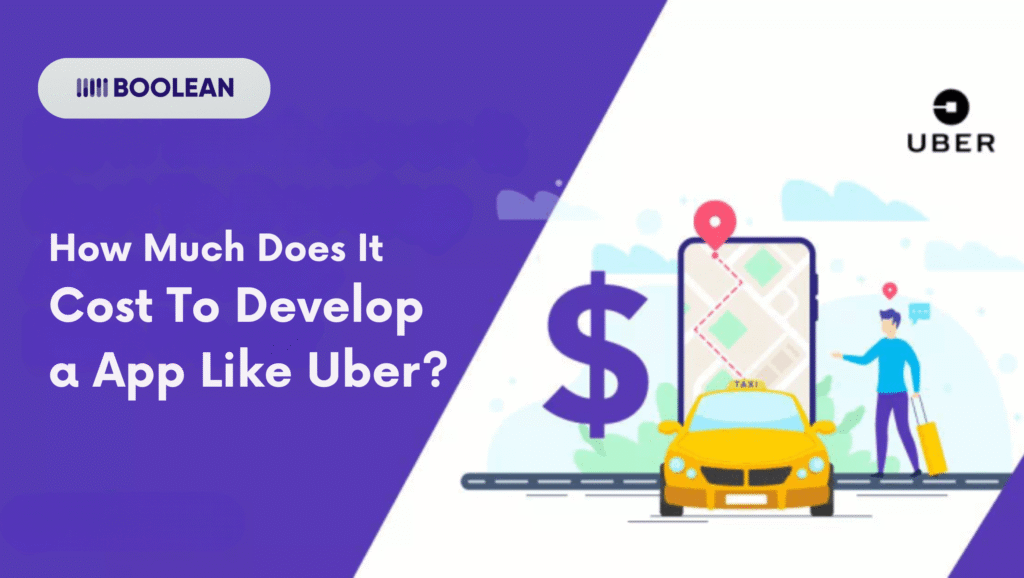
An Uber-like application is a significant investment, and the cost may vary based on several factors, including functionalities, platforms, and development teams.
Generally, the price is expected to vary from $50,000-$300,000, including design, development, testing, and maintenance.
Key Factors Affecting the Development Costs Include:
- Complexity of Features
Easy MVP vs. ones that are complex AI-based matching with real-time tracking and fare calculation.
- Design Quality
Custom UI/UX vs template-based designs, where using polished interfaces increases user retention.
- Platform Choice
iOS, Android, or cross-platform in the case of native apps, but costs go up, and so does performance.
- Development Team Location
Superfluously cheap as compared to the other nations (like the US and Eastern Europe) pay rates, 30-50% savings off-shore teams may show.
- Technology Stack
Native vs hybrid frameworks like Flutter, where hybrid reduces costs but may limit scalability.
- Integration Needs
Maps (Google Maps/Mapbox), payments (Stripe/PayPal), and SMS gateways add licensing/API costs.
- Testing & QA
Monitoring bug-free performance from various devices amounts to nearly 15- to 20 % of the overall budget on exhaustive testing.
- Ongoing Maintenance
This adds approximately 15-20 % of the initial development costs annually because of server costs and updates. These are just a few associated with customer support.
Pro Tip: Start small. Develop a minimum viable product that involves those core features and then validate demand for it before full-scale investment in development.
Proper analysis of all these factors thus not only serves optimal budgeting but could also easily be transposed into a competitive Uber alternative in terms of cost-functionality balance.
Phased development can also be adapted to rolling out expenses while getting feedback collected from users for their improvements.
Read Also: How Much Does Hybrid App Development Cost in 2025
Partner with a Top App Development Company to Build Your Uber Like App
Creating a successful Uber like application requires technical expertise, domain knowledge, and seamless execution.
An established app development agency will help ensure your ride-hailing service is scalable, secure, and competitive.
Why Partner with a Specialized Development Team?
- Proven Experience – Top firms have built similar apps and understand ride-hailing challenges.
- Rapid Development – A team that knows the best tech says you avoid costly mistakes.
- Cost-Effective – Get predictable pricing and avoid hidden expenses.
- Post-Launch Support – Maintenance, updates, and scaling assistance.
What should you look for in a development partner?
- Portfolio – Look at past Uber-like app projects.
- Technical Knowledge – Check for real-time tracking, payment gateways, and geolocation API skills.
- Client Reviews – Verify trustworthiness and communication.
- Operational Services after Launch – Validates you on updates and scaling support.
Working with the right team will help you deliver a fast-performing Uber alternative in the quickest and most efficient matter at hand.
Conclusion
The ride-hailing industry matured well beyond Uber to boast dozens of applications now competing against each other with pricing, specialty services, or unique features.
You can get:
- Inexpensive rides (Bolt, inDrive)
- Milliners or luxury rides (Blacklane, Cabify)
- Business-based rides (Gett, Wingz)
- Family cars (HopSkipDrive, GoKid)
- Price-gouging in the region (Grab, DiDi, Ola)
There must be some Uber alternative that fits perfectly with your specific needs.
Key Takeaways:
- Pricing Models Comparison: Some of them can be chargeable, such as in surge (Wingz and Gett), or can come with a negotiating fare (inDrive).
- Safety Priority: Curb (licensed taxis) or HopSkipDrive (For kids) will offer an extra security service provision.
- Explore Niche Options: Airport needs rides? Get it from Wingz. Carpool? Via or Split.
- Support Ethical Platforms: Juno and Co-op Ride prioritize fair driver earnings.
As ridesharing further develops, the next thing to do is to explore some of these Uber alternative apps and perhaps save you a couple of bucks or hours in hassle.
Pro Tip: Install 2-3 different apps to compare and contrast prices and availability in real-time!
Last Thought: The best app depends on where you are and what you value most—be it cost, convenience, or comfort. This guide has you ready to ride smarter in 2025 and beyond.
Which alternative of yours would you try first? Do let us know your experiences in the comments! 🚗💨
You want to have your ride-hailing app? [Book a consultation] with our experts to theorize development strategy!
FAQs
- Is there an Uber alternative that’s free?
While there are no ride-hailing apps that are truly free, Via and Split have lower prices due to Spliting the fare with other passengers.
- Is there a ride-hailing app other than Uber or Lyft?
Yes! The best alternatives are Bolt (lower fares), Curb (licensed taxis), and Wingz (pre-scheduled airport rides).
- What is the best ride-hailing alternative to Uber that’s the cheapest?
InDrive (negotiable fares) and Bolt (with lower base rates) are usually the cheapest options and on average will save you 20-40% off Uber’s prices.
- Is Bolt cheaper than Uber?
Yes, Bolt is approximately 10-15% cheaper than Uber for rides in the same cities because they take a lower commission from drivers and also do not charge surge pricing.
- How expensive is it to develop an app similar to Uber?
Depending on the features involved, the design, and the location of your development team, it can cost somewhere between $50,000 and $300,000.







